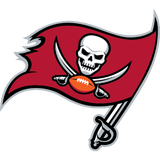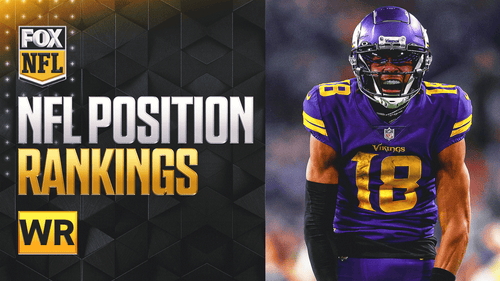
On the Goal Line: Championing the Push for Minority Coaches

While NFL and NCAA are predominantly made up of minority players, the hiring of minority coaches remains a serious problem.
In 2002, the Minnesota Vikings fired head coach Dennis Green and the Tampa Bay Buccaneers fired head coach Tony Dungy. Green and Dungy, two of the NFL’s handful of Black coaches, were let go despite having better records than the majority of their non-minority counterparts.
This drew the ire of civil rights attorney Johnnie Cochran, who campaigned against the low percentage of Black head coaches in the NFL.
That year, the NFL introduced a new rule called the “Rooney Rule.” This was a requirement that all teams interview minority candidates when going through a search for a new head coach. People around the football industry began to take notice of the issue, including NFLPA-certified agent Brian Levy, who started representing coaches that very same year.
The Rooney Rule, while well intentioned, is easily manipulable. The rule requires that a minority candidate be interviewed for the head coaching position; but this can be avoided a variety of ways. It can either be complied with and dismissed; like when NFL teams interview one minority candidate with no shot of getting the job just to comply with the rule.
Tony Dungy has spoken at length about the problems that the Rooney Rule creates:
“The good thing about the Rooney Rule was not that you had to interview a minority candidate, but that it slowed the process down and made you do some research.”
Dungy continues:
[But] now it seems like in the last few years, people haven’t really done what the rule was designed for. It was just become ‘Just let me talk to a couple minority coaches very quickly so I can go about the business of hiring the person I really want to hire anyway.’“
It often (but not always!) can be avoided by hiring a candidate internally. And, if there is contract language designating a non-minority as a ‘coach-in-waiting,’ then the Rooney Rule does not apply.
The Rooney Rule was named for it’s creator: Pittsburgh Steelers owner Art Rooney. Rooney, who has been the owner most vocal about minority coaching disparities, has worked tirelessly to make sure that the rule is enforced.
A few years after the rule’s passage, the Steelers hired their first Black coach in team history: Mike Tomlin. Tomlin is represented by Brian Levy.
“The work this office has done to promote the hiring of minority coaches both at the [professional] and collegiate levels is something I am most proud of. As you can see, there is still so much work to be done.”
Levy’s firm, Goal Line Football, has gained recognition nationally for it’s representation of coaches. In the last two years alone, Goal Line’s coaching practice has almost doubled; the firm now represents over 80 coaches, including Tomlin, former Tampa Bay Buccaneers head coach Raheem Morris, and others.
Nearly half of Levy’s clientele are collegiate coaches. Understatedly, the NCAA struggles even more than the NFL when it comes to hiring minority coaches.
There are only fourteen Black head coaches out of the 128 Division I, FBS programs. When less than 11% of college football’s head coaches are Black in comparison to 57% of the NCAA’s college football players.
College football programs are also more prone to firing minority head coaches as compared to non-minority coaches. Donald Yee, Tom Brady’s agent, wrote an op-ed in the Washington Post examining this discrepancy; Yee analogizes:
“If you’re a white football coach aspiring to become a head coach, the climb up that you face equates to one flight of stairs…. If you’re black, you’d better hire a good Sherpa, because your climb up is [Mount] Everest.”
Yee also points out that part of the problem of poor minority hiring at the very top. According to the University of Central Florida, 86.7% of athletic directors are White. This is not only unacceptable, it is embarrassing.
So, how can coaching hiring be corrected?
The Rooney Rule, as aforementioned, is ineffective. Institutional rules that force teams to interview minority candidates just isn’t good enough to make a lasting change.
The obvious solution would be to have coaches call attention to the issue, but this becomes problematic. Regardless of race or issue at hand, many coaches are afraid to vocalize their opinions on social issues because of the extreme, unappreciated amount of politicking that goes on at colleges and universities.
Want your voice heard? Join the With the First Pick team!
There needs to be a culture change amongst coaches where a coach can feel more comfortable speaking out and speaking honestly. Coaching staffs can be as large as 15 coaches and each coach generally has a feel for his peers.
With the amount of time that each staff spends together, coaches are generally aware of which coaches could eventually lead a staff of their own. Coaches need to speak out in favor of their peers.
Unfortunately, many schools do not allow coaches to advocate fiercely on their own behalf. Enter the agents and advocates who seek to combat this issue. Because of either intentional or implicit biases, Black coaches are not getting the opportunities that they deserve.
Levy states:
“So many minority coaches are scared to speak on the record for fear that they’d even suffer more in the hiring process”
Because of all of the social issues that come with sports, role of the agent has to go beyond the traditional scope. Levy and Yee demonstrate this. Agents need to speak out on behalf of coaches and players when they cannot; yes, contract negotiation is nice. But helping to promote the integrity of the game in an equitable way is what makes their job so important.
More from With the First Pick
This article originally appeared on











